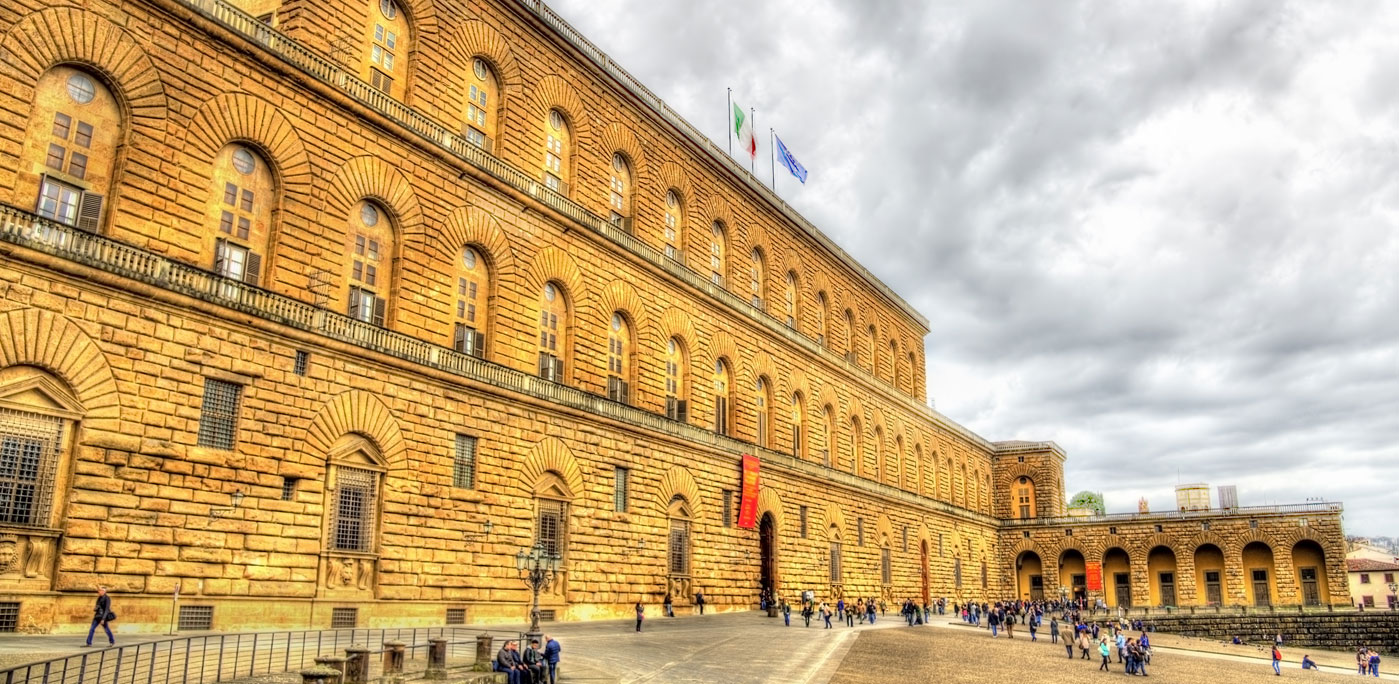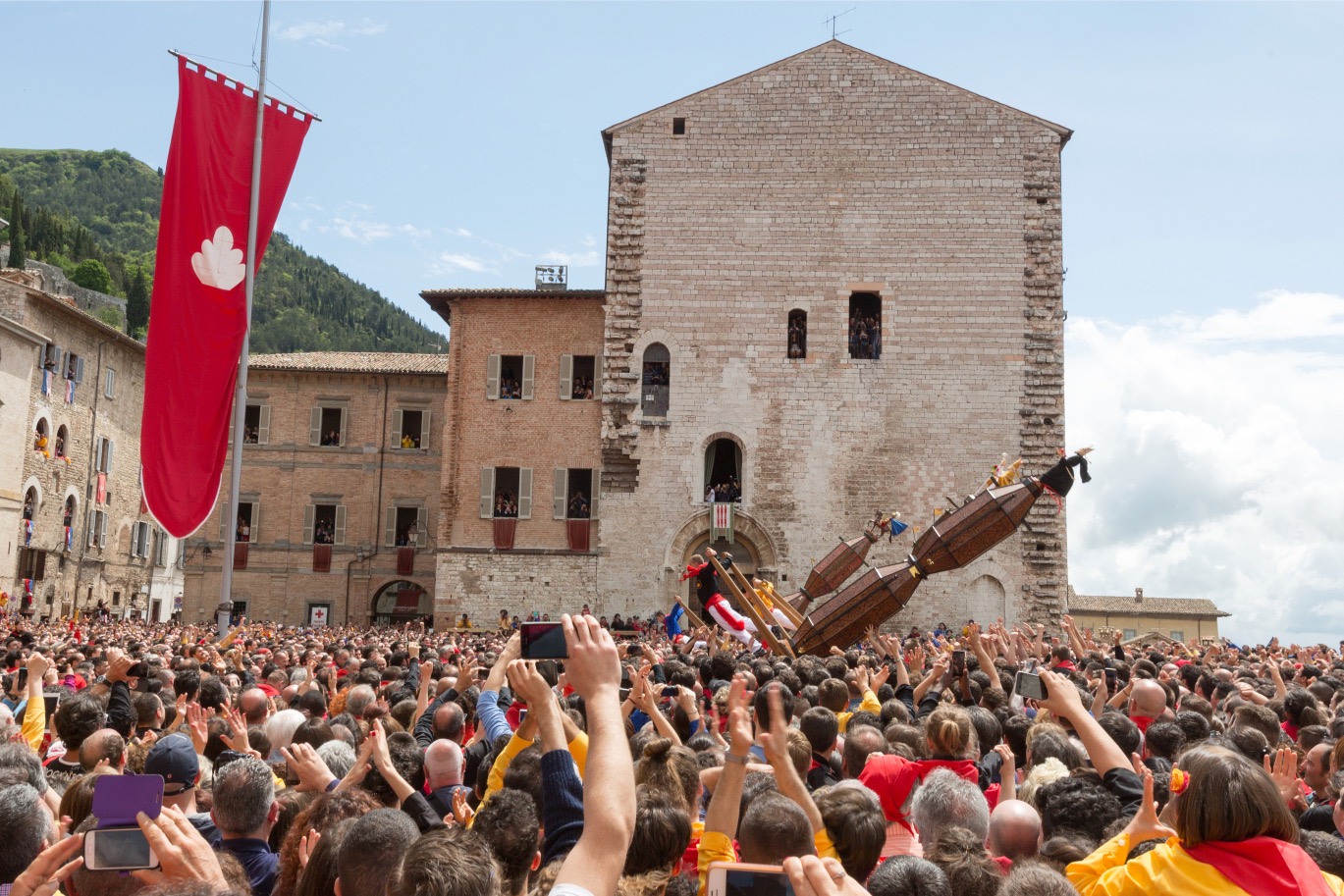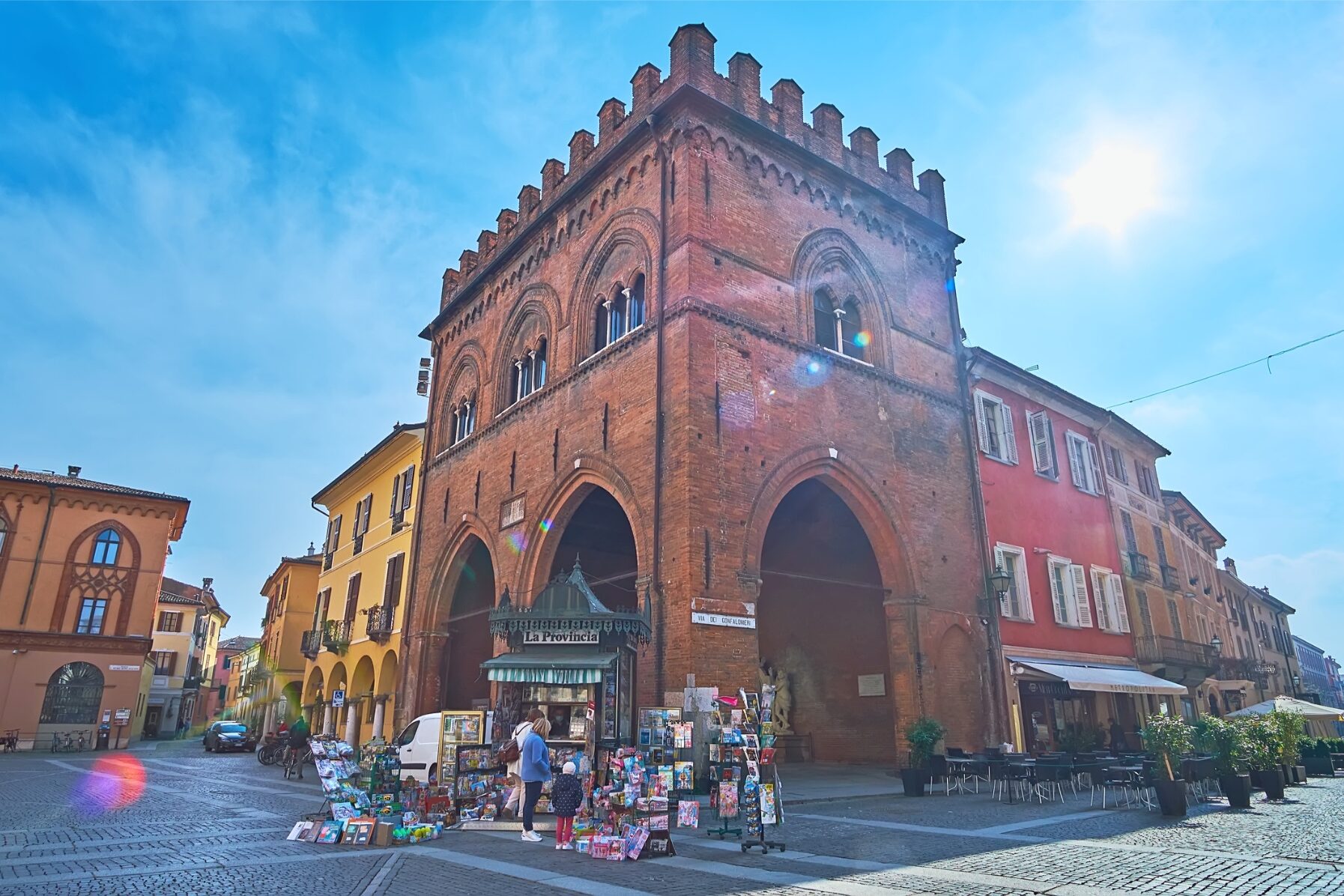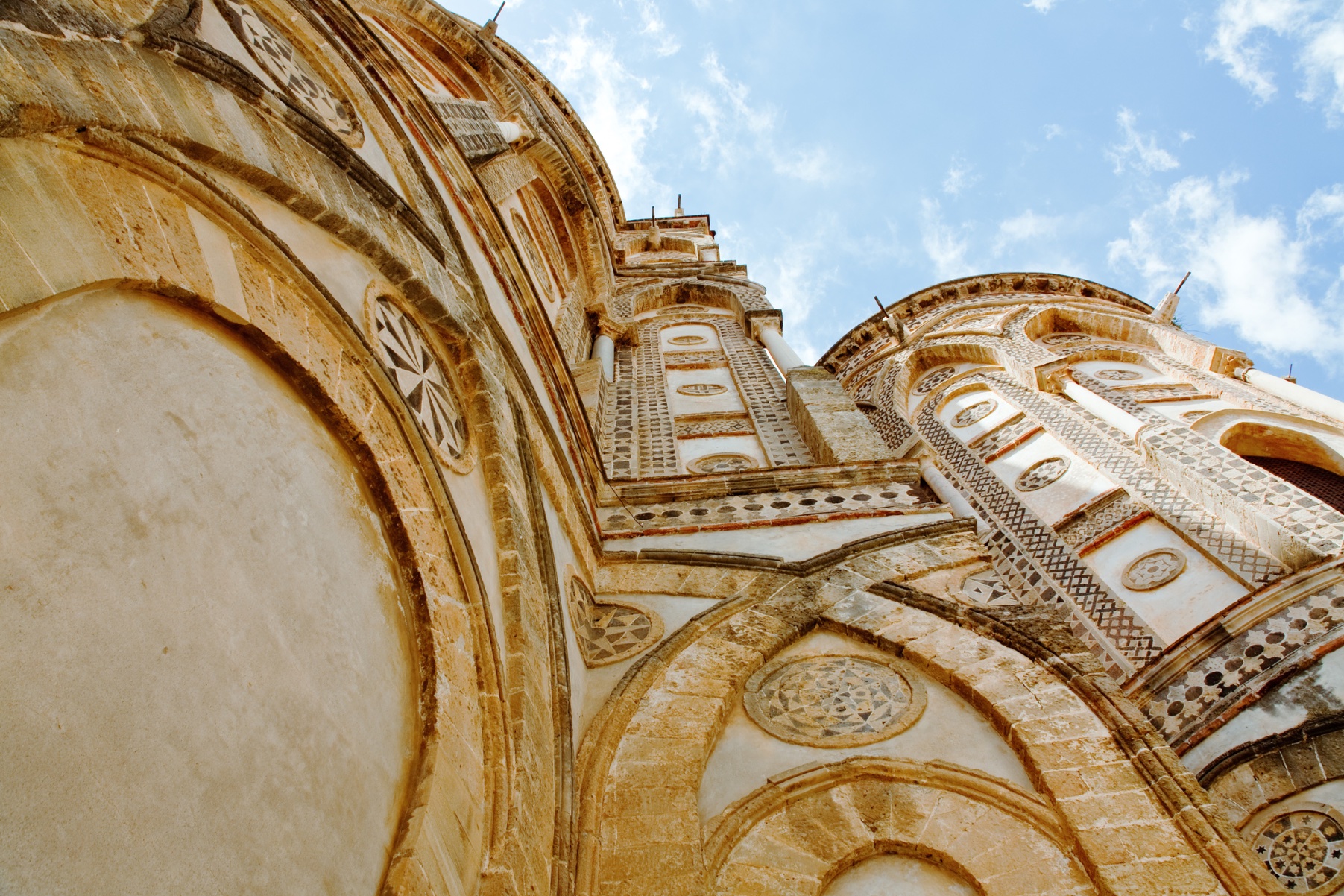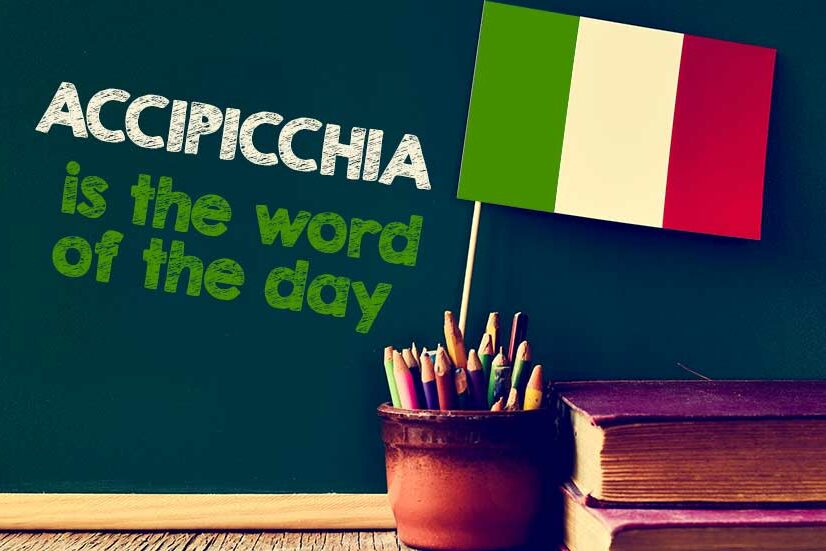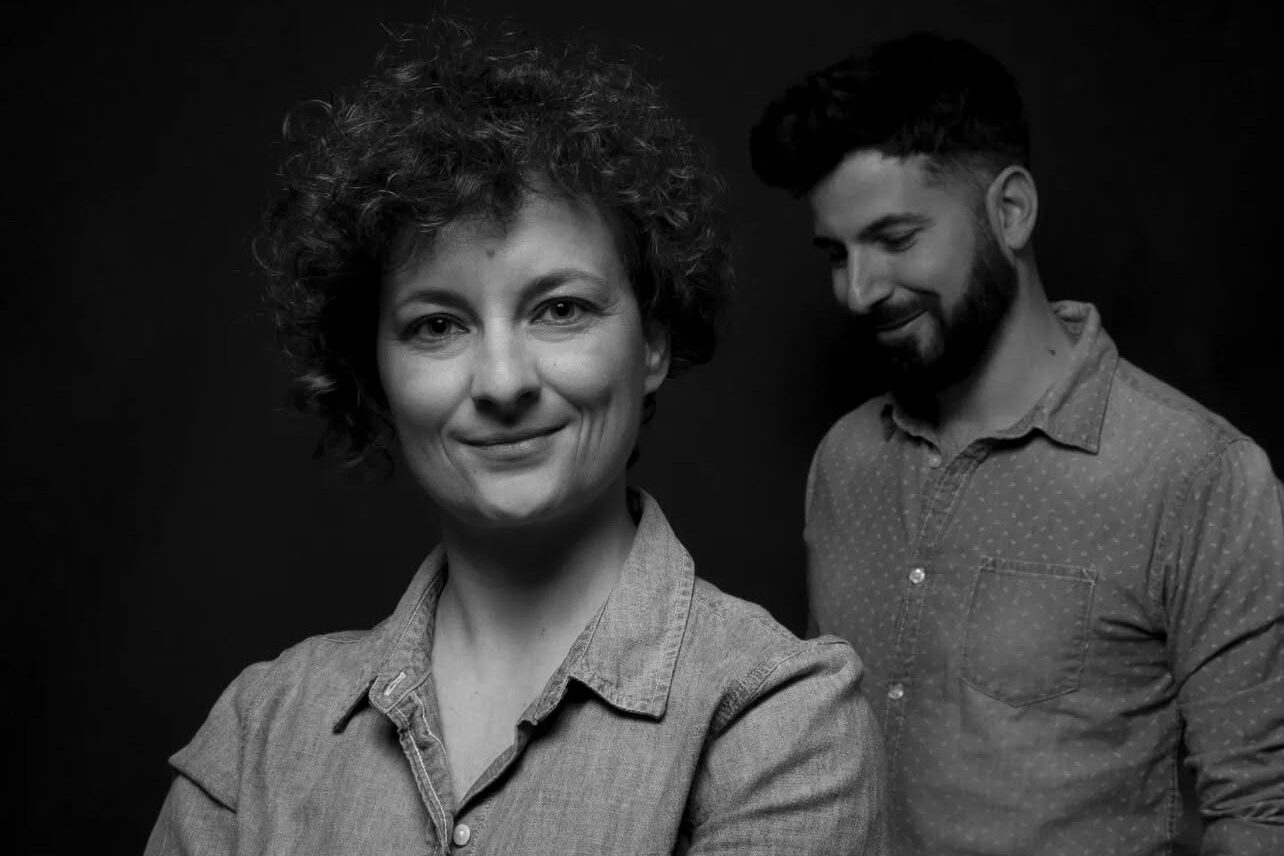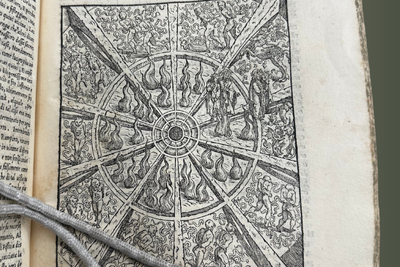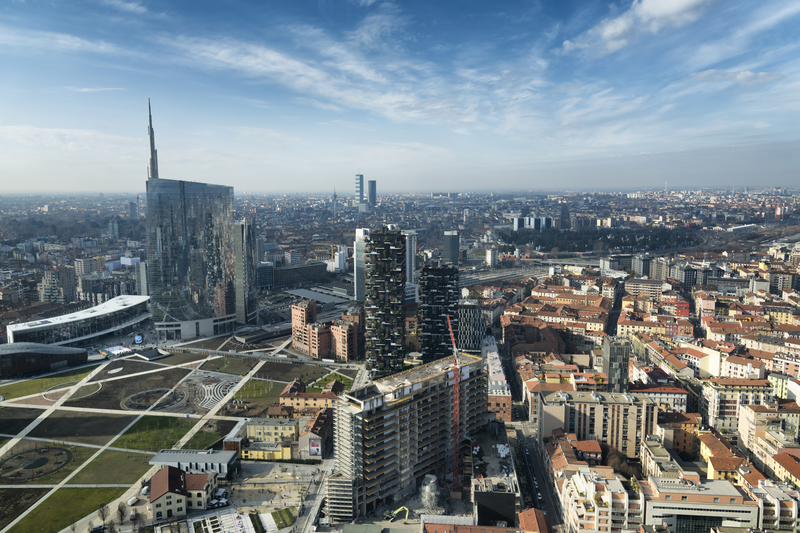The third and last official residence of the Medici in Florence is the grandiose Palazzo Pitti. Located at the foot of the Boboli hill in the Oltrarno quarter, just past the Ponte Vecchio, the palace now hosts the city’s largest museum complex, including – among others – the Palatine Gallery (once the Medici’s private art collection, with paintings by Raphael, Titian, Caravaggio, and others), the Gallery of Modern Art (a collection of works by 19th and 20th century Italian painters, such as the so-called Macchiaioli), and the Royal Apartments (inhabited by the Medici and their successors, among them the Kings of Italy). In addition, the large uphill park on the back of Palazzo Pitti, known as the Boboli Gardens, represents one of the world’s finest examples of “giardino all’italiana” (Italian garden), with its sculptures, fountains, and limonaia (orangery), but also an amphitheater and an Ancient Egyptian obelisk.

In the course of its long history, the Pitti Palace would become the main residence of the Grand Dukes of Tuscany, seven of whom were members of the Medici dynasty. The building, however, already existed by the times of Cosimo the Elder. In fact, its construction began in 1458, when the rich Florentine banker Luca Pitti – who until then had been a friend and supporter of the Medici – started to rival the family’s glory by intending to erect the most sumptuous palace in Florence: according to the legend reported by Giorgio Vasari, Pitti even picked up the abandoned project that Filippo Brunelleschi had first proposed for Cosimo’s palace on Via Larga, then commissioning the architect Luca Fancelli to make the windows of his new building as big as the main entrance of Palazzo Medici, while the courtyard alone should have been as large as the whole Medici Palace. Eventually, though, Pitti fell deep into debt and was thus forced to stop his ambitious plan and to leave part of his residence unfinished.
Funnily enough, it was the Medici family who would soon take full possession of Palazzo Pitti: around 1550, Duchess Eleanor of Toledo – wife of Cosimo I de’ Medici, Duke of Florence – decided to buy this estate from the impoverished descendants of Luca Pitti. When Cosimo I was later elevated to the rank of Grand Duke of Tuscany, he decided to move his official seat from Palazzo Vecchio to Palazzo Pitti. Besides doubling the size of the palace (with new additions by Bartolomeo Ammannati) and laying the cornerstone of what would become the Boboli Gardens (under Niccolò Tribolo’s supervision), Cosimo I commissioned Vasari with the construction of the famous Corridor connecting his old palace to the new residence through the Uffizi Gallery and the Ponte Vecchio.
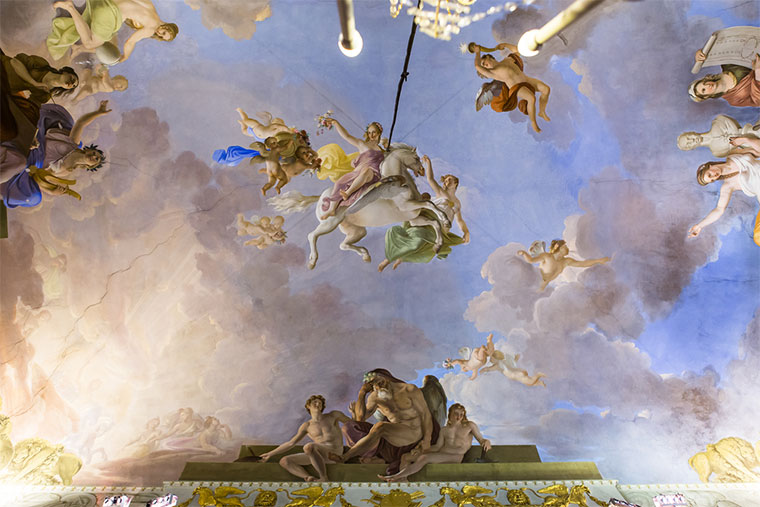
However, it was not until the rise to power of Cosimo I’s son and successor Francesco I in 1574 that Palazzo Pitti permanently replaced Palazzo Vecchio as the royal residence. Just as his father, Francesco was a great patron of the arts and also a science enthusiast: he asked Vasari to build him the finely-decorated Studiolo in the Old Palace (to serve as his own laboratory) and the Tribuna of the Uffizi, while the gardens of the new palace were enriched with the extravagant Grotto by Bernardo Buontalenti.
Francesco and his wife gave birth to six females (among them Maria de’ Medici, future Queen of France), but they were unable to produce male descendants. Upon Francesco’s sudden death in 1587, he was thus succeeded by his younger brother Ferdinando, a cardinal and “founder” of the Villa Medici in Rome: eventually, though, the new Grand Duke had to renounce his vows in order to marry Christina of Lorraine (their wedding was celebrated in Palazzo Pitti’s courtyard). In addition to the building of the Forte Belvedere at the very top of the Boboli hill, Ferdinando also wanted Matteo Nigetti to begin the construction of the Chapel of the Princes, the main section of the Medici mausoleum in San Lorenzo. Moreover, Ferdinando I delegated none other than Galileo Galilei with the education of his son, Cosimo II, who came to power in 1609 and is remembered today as the patron of the great scientist.
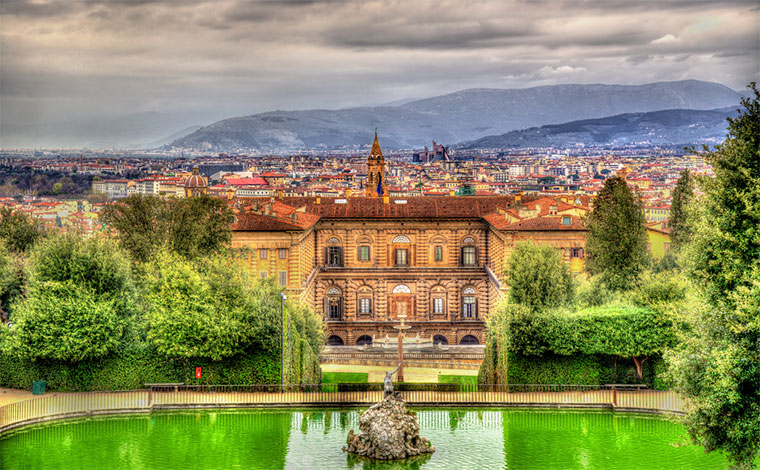
Just like Cosimo II, the three Medici Grand Dukes that followed him – that is, Ferdinando II (1621-70), Cosimo III (1670-1723), and Gian Gastone (1723-37) – were all born and raised in Palazzo Pitti. During their reigns, which marked an era of economic decline for Tuscany, the royal palace nonetheless continued to expand and to fill up with precious works of art: for example, Ferdinando II arranged the decoration of the halls nowadays hosting the Medici Treasury (or Silver Museum), as well as that of the so-called Rooms of the Planets with allegorical frescoes by Pietro da Cortona and Ciro Ferri representing the apotheosis of the Medici family.
By the start of the 18th century, though, the Grand Ducal branch of the Medici was on the verge of extinction, to the consternation of Cosimo III: of his two male heirs, the eldest – Grand Prince Ferdinando – had died before him without descendants, while the youngest – Gian Gastone, who succeeded him – also had no issue. Upon Gian Gastone’s death in 1737, thus, Florence and Tuscany ended up into the hands of the House of Lorraine, as Palazzo Pitti did.
But even so, another member of the family, Cosimo III’s only daughter Anna Maria Luisa, Electress of the Palatinate, continued to live at the palace until her own death in 1743: to her, the last lineal descent of the House of Medici, we owe the completion of the Medici Chapels and the all-important Family Pact, prohibiting the new reigning dynasty to take away from Florence any of the works of art that the Medici had collected during their long, long history.
